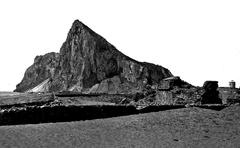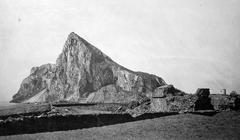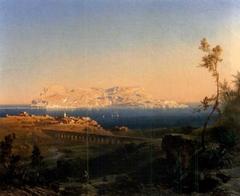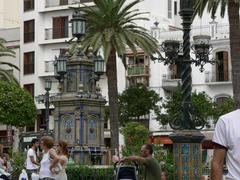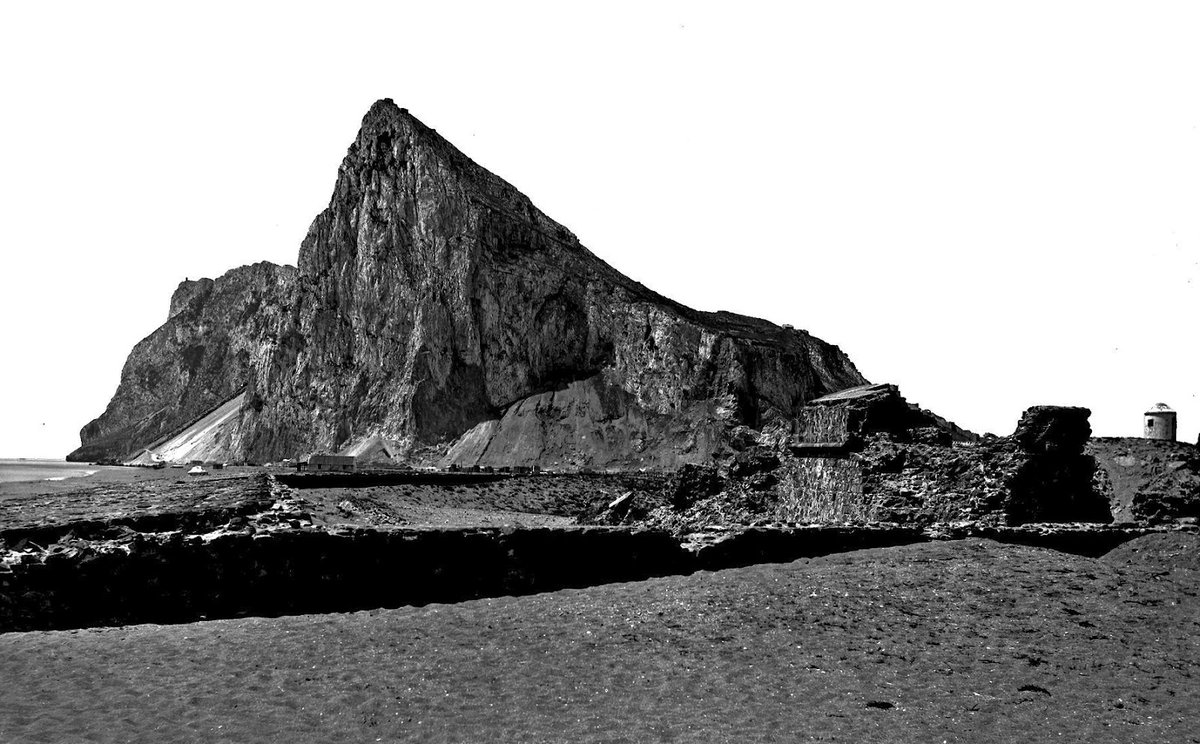
Visiting Fuerte de Santa Barbara in Algeciras: Everything You Need to Know
Date: 24/07/2024
Introduction
Nestled within the vibrant city of Algeciras, Spain, the Fuerte de Santa Barbara stands as a monumental testament to the region’s rich historical tapestry. This fortress, with roots tracing back to the 9th century, has evolved through various epochs, embodying the cultural and architectural influences of the Moors and Christians alike. Originally constructed as a Moorish stronghold, it was strategically positioned to safeguard the port city of Algeciras, reflecting the military acumen of its early builders.
The fortress’s significance magnified during the Reconquista, a pivotal era when Christian forces reclaimed territories from the Moors. Under the command of Alfonso X of Castile, the fortress was renamed Castell de Santa Bàrbara, symbolizing its new Christian identity and marking a new chapter in its storied history (rdougwicker.com). The architectural evolution of the Fuerte de Santa Barbara is a testament to the blend of Moorish and Christian styles, with its ruins, church statues, and arches standing resiliently through the ages.
Today, the Fuerte de Santa Barbara is not merely a relic of the past but a preserved historical monument that offers visitors an immersive experience. From exploring the Weapons Courtyard and Felipe II Hall to taking in the panoramic views from the Watchtower, visitors are treated to a journey through time. This guide aims to provide comprehensive information on the fortress’s history, visitor tips, and must-see attractions, ensuring an enriching visit to this iconic site (castillodesantabarbara.com).
Table of Contents
History of Fuerte de Santa Barbara
Origins and Early History
The Fuerte de Santa Barbara, located in Algeciras, Spain, has a rich and storied history that dates back to the 9th century. Originally constructed as a Moorish stronghold, the fortress was strategically positioned to protect the port city of Alicante. The Moors, recognizing the strategic importance of the location, built the fortress to defend against potential invaders.
Christian Conquest and Renaming
In 1248, the fortress fell into the hands of Christian forces during the Reconquista. Alfonso X of Castile, also known as Alfonso the Wise, played a pivotal role in this conquest. Upon capturing the fortress, Alfonso X renamed it Castell de Santa Bàrbara, in honor of Saint Barbara. This renaming marked a significant shift in the fortress’s identity and its integration into the Christian kingdom (rdougwicker.com).
Architectural Evolution
Over the centuries, the Fuerte de Santa Barbara underwent numerous architectural modifications and expansions. The fortress’s design reflects a blend of Moorish and Christian architectural styles, showcasing the cultural and historical influences that shaped its development. One of the most notable features within the fortress is the ruins of an old church, which includes a statue of Saint Barbara and impressive spindly arches that have remarkably withstood the test of time (rdougwicker.com).
Strategic Importance
The strategic importance of the Fuerte de Santa Barbara cannot be overstated. Situated atop Mount Benacantil, the fortress offers commanding views of the surrounding area, including the city of Alicante and the Mediterranean Sea. This vantage point provided a significant military advantage, allowing defenders to spot approaching enemies from a distance. The fortress’s location also made it a critical point of defense against naval invasions, further underscoring its strategic value (castillodesantabarbara.com).
Modern Era and Preservation
In the modern era, the Fuerte de Santa Barbara has been preserved as a historical monument and tourist attraction. Efforts have been made to maintain the fortress’s structural integrity and historical authenticity. Visitors can explore various sections, including the Weapons Courtyard, Felipe II Hall, the Watchtower, and the Old Dungeons. Guided tours offer insights into the fortress’s history and significance. The Renaissance Cistern, located under the Weapons Courtyard, is another notable feature accessible through guided tours (castillodesantabarbara.com).
Cultural Significance
The Fuerte de Santa Barbara holds immense cultural significance for the region. It serves as a symbol of the historical struggles and triumphs that have shaped the identity of Algeciras and Alicante. The fortress is not only a testament to the architectural prowess of the past but also a reminder of the region’s rich cultural heritage. Events such as concerts, culinary experiences, and dramatized tours are regularly held at the fortress, further enhancing its cultural relevance and appeal to visitors (castillodesantabarbara.com).
Visitor Information
Visiting Hours and Tickets
The Fuerte de Santa Barbara is open to visitors throughout the year. The visiting hours are typically from 10:00 AM to 8:00 PM, though it is advisable to check the official website for any changes or special holiday hours. Tickets can be purchased on-site or online, with prices generally ranging from €5 to €10 for adults. Discounts are often available for students, seniors, and large groups.
Travel Tips
When planning your visit, consider wearing comfortable walking shoes as the fortress grounds can be uneven and extensive. Bring a hat, sunscreen, and water, especially during the summer months, as there is limited shade. Guided tours are highly recommended to gain deeper insights into the fortress’s history and significance.
Nearby Attractions
While in Algeciras, visitors can also explore other historical sites such as the Plaza Alta, the Merced Square, and the Archaeological Park of the Marinid Walls. These sites offer a broader understanding of the region’s rich history and cultural heritage.
Notable Features and Attractions
Several notable features and attractions within the Fuerte de Santa Barbara make it a must-visit destination for history enthusiasts and tourists alike. The Macho del Castillo, located on the highest esplanade of the fortress, offers 360° views of the bay and the city of Alicante. The Old Hospital, which once housed cholera patients and later served as a shelter for beggars, now hosts the “Alicante transfused with Mediterranean” exhibition. This exhibition presents the link between Alicante and the Mediterranean, interspersed with archaeological and ethnological materials (castillodesantabarbara.com).
Visitor Experience
Visitors to the Fuerte de Santa Barbara can expect a comprehensive and immersive experience. The fortress offers a range of activities and attractions, from exploring indoor exhibitions to enjoying panoramic views of the city and the sea. The terrace of the café and restaurant provides a picturesque setting for a meal or a drink, with the stunning backdrop of the sea and the castle’s Weapons Courtyard. The fortress’s surroundings also offer one of the most characteristic images of the city, known as the Head of the Moor, a rocky profile visible from El Postiguet Beach (castillodesantabarbara.com).
FAQ
What are the visiting hours for Fuerte de Santa Barbara? The fortress is typically open from 10:00 AM to 8:00 PM. Check the official website for any changes or holiday hours.
Are guided tours available at Fuerte de Santa Barbara? Yes, guided tours are available and highly recommended for a richer experience.
How much are tickets for Fuerte de Santa Barbara? Tickets usually range from €5 to €10 for adults, with discounts for students, seniors, and groups.
What should I bring for my visit? Comfortable walking shoes, a hat, sunscreen, and water are advisable, especially in summer.
Conclusion
The Fuerte de Santa Barbara stands as a monumental testament to the rich history and cultural heritage of Algeciras and Alicante. From its origins as a Moorish stronghold to its transformation into a Christian fortress, the Fuerte de Santa Barbara has played a pivotal role in the region’s history. Today, it continues to captivate visitors with its architectural splendor, strategic significance, and cultural relevance. Whether exploring its historical ruins, enjoying panoramic views, or participating in cultural events, visitors to the Fuerte de Santa Barbara are sure to have a memorable and enriching experience.
As you plan your visit, remember to bring comfortable walking shoes, sunscreen, and water, especially during the warmer months. Whether you’re a history enthusiast or simply looking to explore a picturesque and culturally significant site, the Fuerte de Santa Barbara promises an experience that is both educational and inspiring. Don’t forget to follow us on social media for more travel tips and historical insights, and to make the most of your visit to this remarkable fortress.
